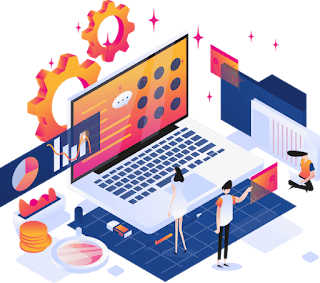Retail Analysis Software
In general, eCommerce brands seem to have an advantage when
it comes to measuring analytics because they are able to track these metrics
precisely through tools that show how long a mouse hovers over an area, or how
often a page is visited.
Unfortunately for live retail stores, cannot precisely
track how long a particular customer spends in a section of the store or where
that particular customer came from. That is why retail analysis software is an
essential part of any successful store.
You may expect retail stores to have steady decline thanks
to the introduction of large eCommerce suppliers such as Amazon. However,
despite the retail apocalypse, stores such as Target, Walmart, Dollar General, Best
Buy, Costco, etc. are all thriving. These stores did not give up at the first
sign of distress, rather, they invested in retail forecasting and retail demand planning, among other retail analysis tools, in order to plan, gauge, meet, and
exceed the demand.
This cutting-edge software provides retail brands with an
opportunity to track customer retention rates, measure the volume of sales,
identify the product return rate, pinpoint transaction trends, and much more. These key indicators allow retail
brands to understand their target audience in a much more personal way.
By having a more specific customer profile, brands are able to optimize
the overall customer experience. For example, retail analysis software can help
a business forecast a product in order to predict the demand. We will use the
example of a perishable good like milk. If a business knows about how much milk
they are going to sell in a given month, then they will know exactly how much
to order. This saves the company money in two ways. First, if the company were
to order too much milk, the extra milk not sold would expire and the company
would not be able to make back the money it spent on buying the milk. Second,
if the company didn’t buy enough milk, then they would lose money that they
would have otherwise made by having the correct supply for the demand.
Not only do they save money by preventing over-stocks or
stock-outs. But the company is also able to save valuable inventory space by
having the exact amount of necessary space. For example, perhaps the company
ordered the correct amount of milk to meet the demand, but they are not able to
store the milk because all of their fridge space is being taken up by eggs. In
this situation, we will assume that milk has a higher profit margin than eggs;
therefore the store loses money by storing a less important product over a more
important one, or simply not being able to store one of the products and it
expires.
This situation is clearly negative when discussing
perishable goods; however, the same can apply to any sort of retail product. A
company can lose money by ordering a large amount of a low-selling product in
place of a high-selling product. With seasonal trends and a growing market, it
becomes harder and harder to plan retail demand and therefore becomes
increasingly necessary for companies to use retail analysis software.
Retail analysis software allows the company to know how much
milk they are going to sell, as well as how many eggs they are going to sell,
in any given month. It allows planners to see product profit margins, perform
an ABC analysis to determine product priority, identify specific product
needs, their space and weight, and several other factors in order to make an
important decision when deciding how much to plan for, manufacture, ship to
each location, and buy. Each of these benefits saves money in their own
distinctive ways so it is no surprise that together, they potentially save
hundreds of thousands to millions of dollars depending on the size of the
company.
Earlier we talked about retail analysis helping a company
gain a clearer portfolio of their target audience. We just talked about how
distinguishing top products from low-selling products can generate and save
profit. Now when you put those two together, a specific customer with the
specific product they are going to buy, a company can start planning their
store around those customers.
By creating a store layout that encourages each member of
each target audience to go to specific sections of a store, having specific
products placed in optimal view on eye-height shelves, the store will increase
revenue and gain even more information about their customers and products they
sell during each season. This process will make for constant growth,
increasing the retail forecast of the coming year and thereby optimizing the
retail demand plan as well.
The ultimate goal of most retail entities is to have a more
successful year than the last, every year they exist. That is how their value
can be gauged in the stock market. With a retail analysis process getting more
accurate and increasing profit year over year, any retail company will
naturally expand and simultaneously increase its value.



Comments
Post a Comment